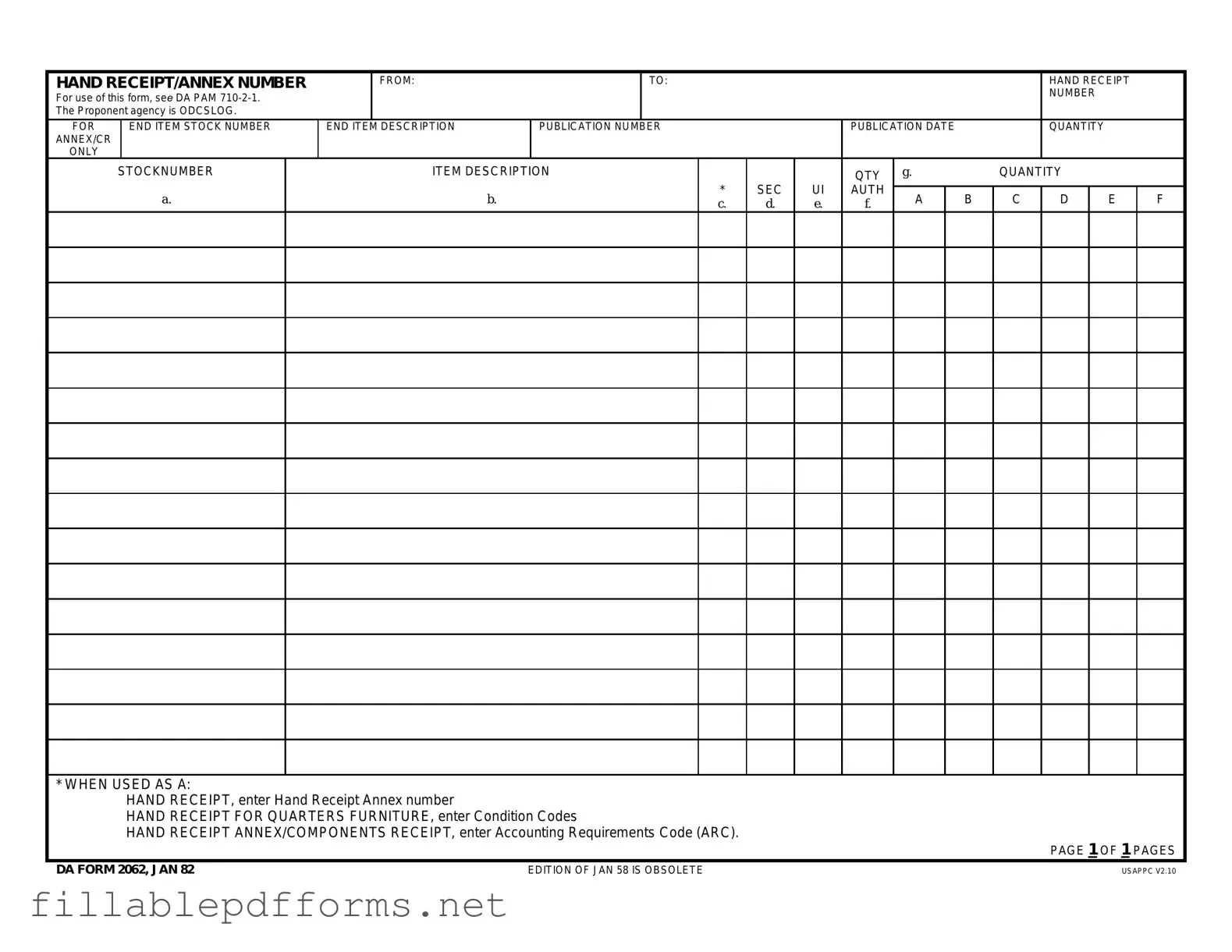The DA Form 2062, commonly referred to as the Hand Receipt, plays a crucial role in the management of property accountability within the U.S. Army. This form serves as a formal record of items issued to individuals or units, detailing essential information such as the hand receipt annex number, stock numbers, and item descriptions. It is vital for tracking the quantity of equipment and supplies, ensuring that all assets are accounted for and properly maintained. When using this form, individuals must adhere to specific guidelines outlined in DA PAM 710-2-1, which provides the necessary framework for property accountability. The form can be utilized in various contexts, including hand receipts for quarters furniture or components receipt, each requiring different entries such as condition codes or accounting requirements codes. Overall, the DA Form 2062 is not just a bureaucratic tool; it is an essential component of operational readiness, helping to maintain transparency and responsibility in the management of military assets.
